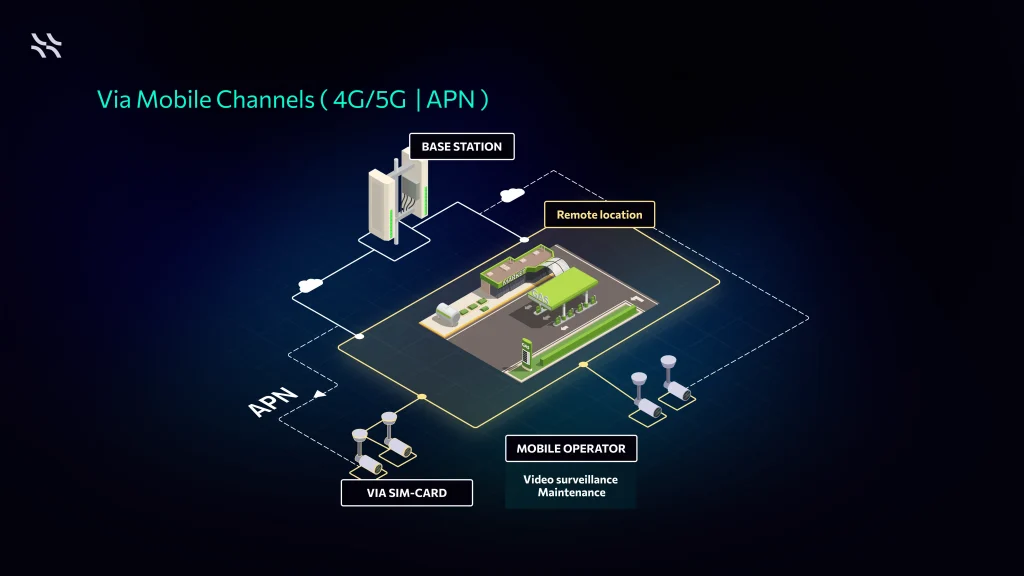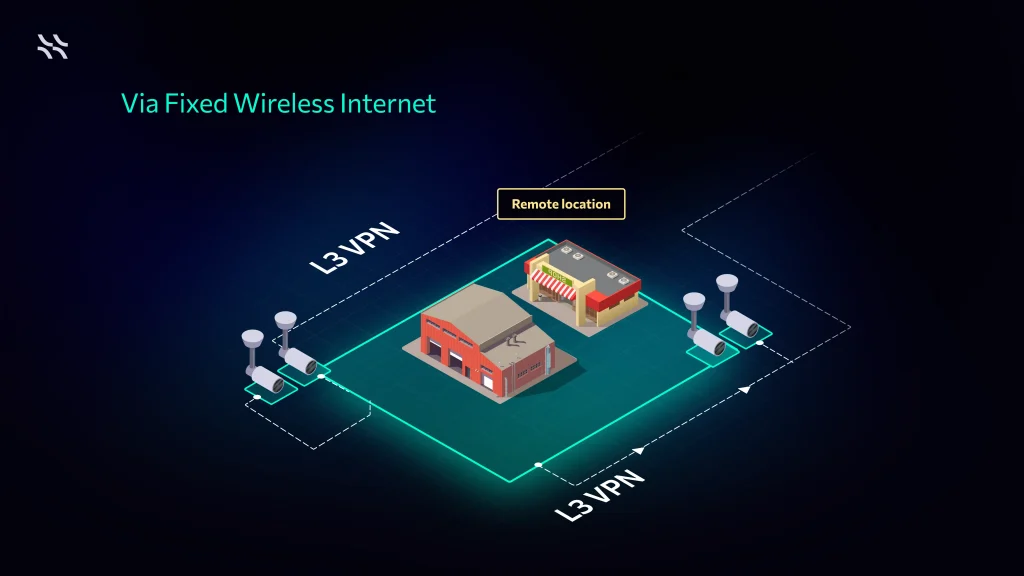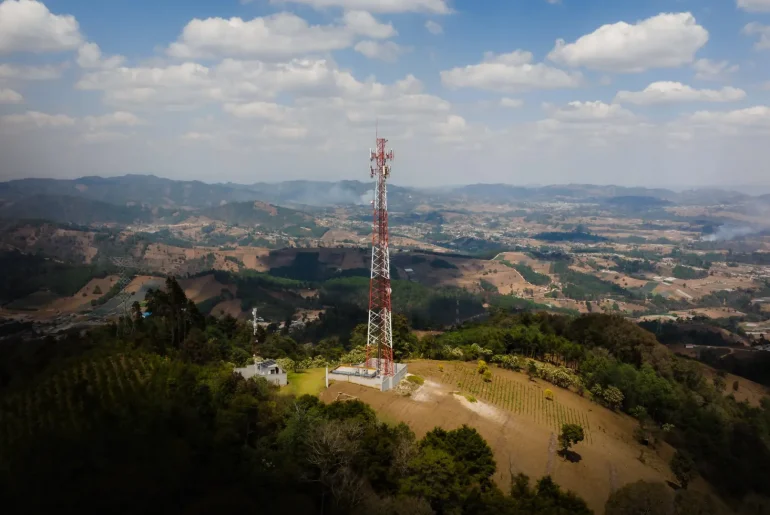How mobile operators can include modern VSaaS in their service portfolio
The Real Businesses Problem: Security Without Connectivity
Businesses that operate from distributed or remote sites including gas stations, warehouses, construction areas, agricultural facilities and logistics hubs face a major security challenge. 4G/5G based cloud Video Surveillance can be the only solution.
Let’s explore!
The main problem stems from these locations lacking permanent internet access through fiber connections. The lack of dependable network connections makes it impossible to maintain continuous video surveillance and immediate incident response throughout 24 hours.
- Lack of fixed internet connectivity (fiber).
- Inability to ensure 24/7 security monitoring: traditional methods require significant investment in local video surveillance storage and maintenance, reducing the effectiveness of real-time incident response.
- Absence of tools to monitor operational efficiency at sites (for example, unauthorized sales, dispensing of prescription drugs, or cash register discrepancies).
- Losses due to theft, errors, and inefficient staff performance, as well as costs associated with investigating incidents.
Among the other challenges
- High costs. Servers, local software, maintenance, and archive storage become CAPEX instead of predictable monthly OPEX.
- Limited connectivity. Most remote sites lack fiber; mobile internet is traffic-limited and unstable with legacy CCTV setups.
- Reliability issues. Local systems often fail to deliver real-time video streaming or fast archive access.
- Distraction from core business. Security is essential but not revenue-generating. Companies don’t want to manage IT-heavy CCTV systems.
The issue affects businesses worldwide because it represents a widespread industry pattern.
According to Allied Market Research, the global VSaaS (cloud video surveillance) market will reach $57B by 2032 with ~10% CAGR. Key growth driver 4G/5G based cloud Video Surveillance for remote sites & SMBs, where 4G/5G replaces fixed internet.
Who is on the forefront? They are Mobile Operators with their radio (wireless) infrastructure built.
4G/5G based cloud Video Surveillance (VSaaS). Turning a Burden into a Service
Video Surveillance as a Service (VSaaS) addresses this gap by transforming what was once a heavy IT investment into a predictable, subscription-based service. Mobile Operators can be the solution having all the opportunities in organizing wireless connectivity. Instead of purchasing servers, installing complex software, and managing local video archives, businesses can simply connect to the cloud using the LTE network.
For mobile operators, VSaaS becomes a new revenue stream beyond connectivity. Instead of only selling bandwidth, they provide a turnkey 4G/5G based cloud Video Surveillance that bundles hardware, connectivity, cloud access, and advanced analytics. For end customers, this means predictable monthly costs, scalable deployment, and zero distraction from their core activities.


Now let’s explore how to get first clients from the businesses and users with distributed or remote sites!
Business Case. Organizing Cloud Video Surveillance via Mobile Networks
The true breakthrough for mobile operators is that cloud video surveillance no longer relies on fixed broadband. By harnessing LTE, 4G, or 5G networks, video streams can be transmitted securely via private APNs, dedicated channels, or fully managed operator connections. It turns existing mobile infrastructure into a powerful competitive advantage in segment of Smart Security.
For businesses with distributed sites or hard-to-connect locations, this isn’t just a convenience. Often it turns out to be the only practical solution for real-time, reliable security.
Now, let’s explore how operators can effectively market and sell this solution, unlocking its full potential while requiring minimal upfront investment.
Case Study. Organizing Cloud Video Surveillance System
Service: Smart Security & Business Efficiency powered by Mobile Operators
Businesses Side: The Need and the Task
The task is to transform the non-core function of video surveillance into a convenient cloud service based on a monthly subscription model from mobile operators, while ensuring:
- operation without restrictions on availability or internet bandwidth
- no limitations related to internet traffic
- uninterrupted video transmission without delays
- easy scalability for any number of sites
- out-of-the-box availability without the need to invest in IT infrastructure
Solution for Business from the Mobile Operator
The mobile operator provides a pre-made solution “out-of-the-box” that eliminates business requirements for video surveillance system design, maintenance and updates on their own. This is not just about selling a service. It’s about solving the head-ache and delivering a comprehensive package that includes equipment and SIM cards for connectivity
The package from Mobile operator to help launching cloud video surveillance consists of:
- IP cameras (from 4 to 12 units, 2–4MP resolution) for installation in cash desk areas, entrances/exits, warehouses, and production facilities.
- Router with SIM card, providing connectivity via 4G/5G without the need for fixed internet.
- Aipix cloud video surveillance platform, ensuring 24/7 access to video and analytics through white-label web and mobile applications under the operator’s brand.
- Advanced Video analytics, including people counting, line crossing detection, fire and smoke detection, and real-time alerts.
Equipment delivery, installation, and servicing can be carried out either by the operator itself or by trusted partners.
The key advantages for businesses are clear:
- Single provider – the mobile operator delivers the service, data transmission, and support, being responsible for both connectivity and the platform.
- Single bill – predictable monthly payments, simplifying cost management.
- Single SLA – guaranteed service quality without “blurred responsibility” across multiple vendors.
- Scalability – from a single site to a distributed nationwide network.
The customer receives a complete LTE Smart Security system that can be deployed at a site within one or two days without requiring major investments for equipment or IT personnel or complex installation processes.
Business Outcomes and Advantages
Businesses operating multiple sites or working remotely need video surveillance systems that enhance operational efficiency while controlling costs and improving business performance. Traditional video surveillance systems require businesses to spend large amounts of capital while creating complex IT systems and handling multiple separate responsibilities. Aipix delivers video surveillance as a cloud subscription-based service which creates a complete monitoring system. It handles all essential business surveillance needs.
Key Functions Include:
- Cash desk monitoring. Reduces fraud and enforces staff discipline.
- Warehouse and production area oversight. Protects valuable assets, ensures quality of work, and monitors shifts.
- Visitor analytics. Tracks unique visitors to provide actionable insights for traffic analysis and marketing planning.
- Incident management. Supports resolution of disputes, customer complaints, and compliance checks.
- Safety monitoring. Real-time detection of fire and smoke, a mandatory safety function for all sites.
Clear Business Benefits:
- Savings on fixed-line infrastructure
- Improved transparency – gives insight into employee activity and operational processes.
- Enhanced efficiency and profitability up to 30% profit growth by optimizing the performance of remote locations.
- Reduced losses and security costs (prevents theft, errors, and unnecessary spending on manual supervision).
- Rapid deployment (from 1 day deployment).
- Scalability (from a single site to a distributed network of locations)
Commercial Model of Service Provided: Bundles for Selling to Businesses
One of the most effective ways to introduce the service to businesses is through pre-packaged bundles, combining connectivity, hardware, and cloud services into a single subscription. Three main tiers are suggested:
- Bundle Basic
Tailored for small businesses needing monitoring and video archive access without advanced analytics. Includes:
– SIM cards for internet and voice
– 24/7 cloud video access
– 7-day archive storage
– Mobile App Access (branded as operators App, but provided by Aipix VSaaS with White-Label)
- Bundle Smart
Designed for remote retail stores, leisure sites, warehouses, and fuel stations, where operational efficiency is as important as security. Builds on
– Basic plan
– up to 14-day archive storage
– analytics (unique people counting and line crossing detection)
- Bundle Pro
Ideal for large chains, pharmacies, and logistics operations requiring comprehensive security and compliance. Includes all:
– Smart Plan
– up to 30 days archive storage
– analytics (unique people counting and line crossing detection, fire&smoke detection)
– personalized SLA with 24/7 priority support
This bundled approach simplifies purchasing for businesses, ensures predictable costs, and encourages adoption by providing a complete end-to-end solution in a single package.
Cloud Video Surveillance Service Provided by Mobile Operator. Global Experience
The concept of mobile operator-led VSaaS is already validated in global markets.
- Verizon (USA) offers “Business Video Monitoring over LTE” for gas stations and retail.
- Vodafone (EU) sells Video Surveillance as a Service for transportation and logistics.
- China Mobile is massively deploying 5G-based cloud video surveillance for agricultural and construction sites.
This confirms that operators already have the necessary expertise and a ready market, which means a similar solution can be quickly launched locally.
New Service Implementation Roadmap
When it comes about implementation – what mobile operator can wait after launching video surveillance as a service? A phased rollout ensures controlled deployment, operational learning, and scaling:
- Phase 1. MVP (3–6 months). Launch pilot projects with partner networks such as retail stores and fuel stations. Test pricing, service packages, and operational scenarios.
- Phase 2. Scaling (6–18 months). Expand service to the SMB segment, including shops, warehouses, auto services, and pharmacies. Introduce advanced video analytics as an upsell.
- Phase 3. Ecosystem Development (18–36 months). Integrate with CRM systems and access control platforms. Expand into government and public-sector contracts, including schools, healthcare facilities, and municipal services.
This approach allows mobile operators to establish a full LTE/4G/5G Smart Security ecosystem, delivering measurable value to telco businesses while creating new revenue streams and leveraging existing network infrastructure.
The Final Words
Business can achieve empowerment through Mobile Operator and Aipix LTE or 4G/5G based cloud Video Surveillance Smart Security solutions. As Mobile operator deliver b2b clients cost savings, operational excellence and continuous protection without requiring IT infrastructure investments.
Contact us to deploy a turnkey video surveillance solution in just days and start transforming your revenue streams with fully monitored, intelligent environments.





